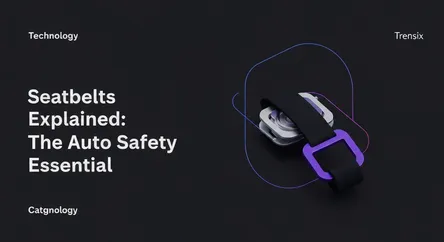Technology
Seatbelts Explained: The Auto Safety Essential

Discover the essential technology behind seatbelts. Learn how they work, why they're still evolving, and how they save millions of lives.
What is it?
A seatbelt is a vehicle safety device designed to secure an occupant against harmful movement during a collision or sudden stop. It consists of a tough webbing strap, a retractor mechanism, and a buckle. The most common type is the three-point belt, which spreads the energy of impact over the chest, pelvis, and shoulders. Modern systems often include advanced features like pretensioners, which instantly tighten the belt during a crash to hold the occupant firmly in place, and force limiters that reduce belt-related injuries.
Why is it trending?
While a foundational technology, seatbelts evolve with automotive safety. Current trends involve 'smart' systems that integrate with a car's sensors to adjust tension based on crash severity or occupant size. Inflatable seatbelts, which combine the features of a belt and an airbag, are also gaining traction in newer vehicles. Persistent public safety campaigns by governments and auto manufacturers continually highlight their importance, keeping the technology a relevant topic for driver safety and new car development.
How does it affect people?
Seatbelts drastically reduce fatalities and serious injuries in traffic accidents. By preventing ejection and managing deceleration, they are the single most effective safety feature in a vehicle. For individuals, wearing a seatbelt is a legal requirement in most countries, directly impacting daily driving habits and providing critical protection for all passengers. They fundamentally change the outcome of a potential crash, turning a life-threatening event into a survivable one and offering essential peace of mind on the road.